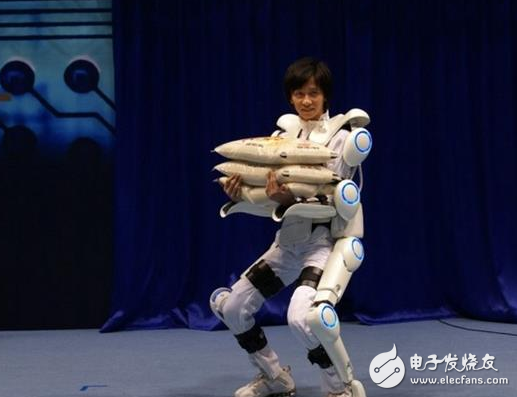Double Eleven is not just a shopping festival—it's a massive digital celebration, with over 168.2 billion yuan in transactions, marking one of the most vibrant moments of the year for Alibaba. For consumers, it's a time of joy and excitement, but for logistics workers, it's also the most demanding period of the year. Recently, JD.com caught attention for its thoughtful approach toward its employees, which was widely appreciated online. The company introduced an exoskeleton robot designed to reduce back strain among its logistics staff. These workers often bend and lift heavy items repeatedly, leading to serious spinal issues, especially during peak seasons.
The success of a company isn’t only measured by its financial performance, but also by how well it values and supports its workforce. This initiative marks the first industrial application of exoskeleton technology in China.

JD.com employees wearing exoskeleton robots at work
**The Origin of Exoskeleton Robots** Exoskeletons have long captured our imagination, especially through movies like *Edge of Tomorrow*, where actors wear advanced suits to enhance their physical abilities. In real life, the concept dates back to the 19th century. In 1830, British illustrator Robert Seymour created a drawing titled "Walking By Steam," depicting a steam-powered walking aid—considered an early inspiration for modern exoskeletons. In 1890, a Russian inventor named Nicholas Yagen developed an air-powered exoskeleton-like system, and in 1917, Americans created a steam-powered version. By the 1970s, General Electric introduced the Hardman system, capable of lifting up to 1,500 pounds. With the rapid development of electronics, sensors, and control systems, exoskeleton technology made major breakthroughs in the late 20th century. Companies like Raytheon developed the XOS exoskeleton, allowing users to lift hundreds of pounds effortlessly. Beyond military use, exoskeletons began entering commercial markets. In 2004, Japanese roboticist Dr. Yoshiyuki Sankai founded Cyberdyne and launched the HAL (Hybrid Assistive Limb) exoskeleton, primarily used for medical rehabilitation. Other notable names include Rewalk from Israel, Ekso from the U.S., and more.
Exoskeleton robot HAL
**Development of Exoskeleton Technology at Home and Abroad** China has been catching up in exoskeleton research, though it still lags behind global leaders. The country’s focus has shifted from military to commercial applications. In 2013, the Nanjing Military Region General Hospital unveiled the first Chinese exoskeleton, called the “Single Weight-Bearing Auxiliary System,†aimed at reducing load on soldiers. While it was considered one of the most complete systems, its functionality was limited. In 2014, the Changzhou Institute of Advanced Chinese Academy of Sciences launched the EXOP-1 exoskeleton, featuring 22 sensors and a controller. Though it reduced weight burden, it was bulky and not yet practical for widespread use. In recent years, the commercial market has seen rapid growth, with companies like Daai, Scream Tech, and Fu Liye Intelligence launching exoskeleton products. Even recently, a new product called BEAR H1 was released, targeting hemiplegic patients. Rehabilitation exoskeletons are particularly promising. According to GrandView Research, the global exoskeleton market is expected to grow at a compound annual rate of 47% over the next five years, highlighting strong potential in this field. **Industrial Exoskeleton Development** While rehabilitation exoskeletons are more advanced, industrial applications are gaining momentum. Companies like Panasonic have been exploring this area since 2014, developing lightweight exoskeletons that help workers carry loads of up to 15 kg. Their latest models, such as AWN-03 and Power Loader, use carbon fiber and sensors to provide support during lifting tasks. Ekso Bionics, known for its medical exoskeletons, has also entered the industrial space with the EksoVest, now being tested in Ford factories. Future expansion to other regions is possible. However, current industrial exoskeletons are often large and heavy due to power limitations. That’s why the exoskeletons seen in JD.com’s videos are connected via cables, suggesting they are pneumatically powered. This represents the first publicly available industrial exoskeleton, a significant milestone. Experts believe that with future advancements in motors and batteries, the industrial exoskeleton market will truly take off.Kevlar Woven Net Pipe,Kevlar Braided Protective Tube,Kevlar Braided Sleeve
Shenzhen Huiyunhai Tech.Co., Ltd. , https://www.cablesleevefactory.com